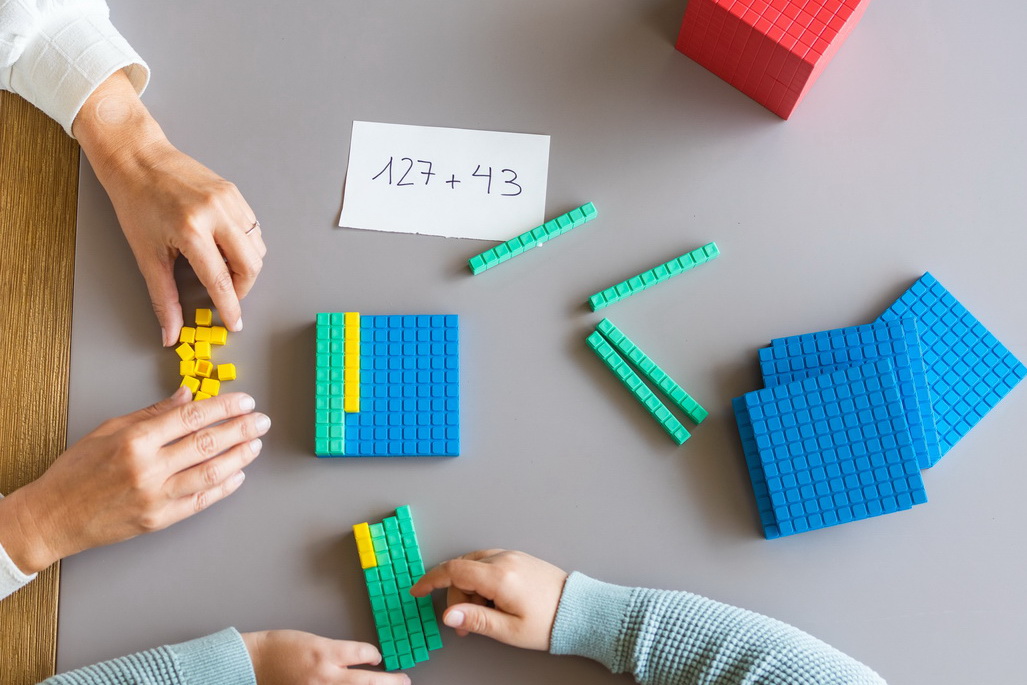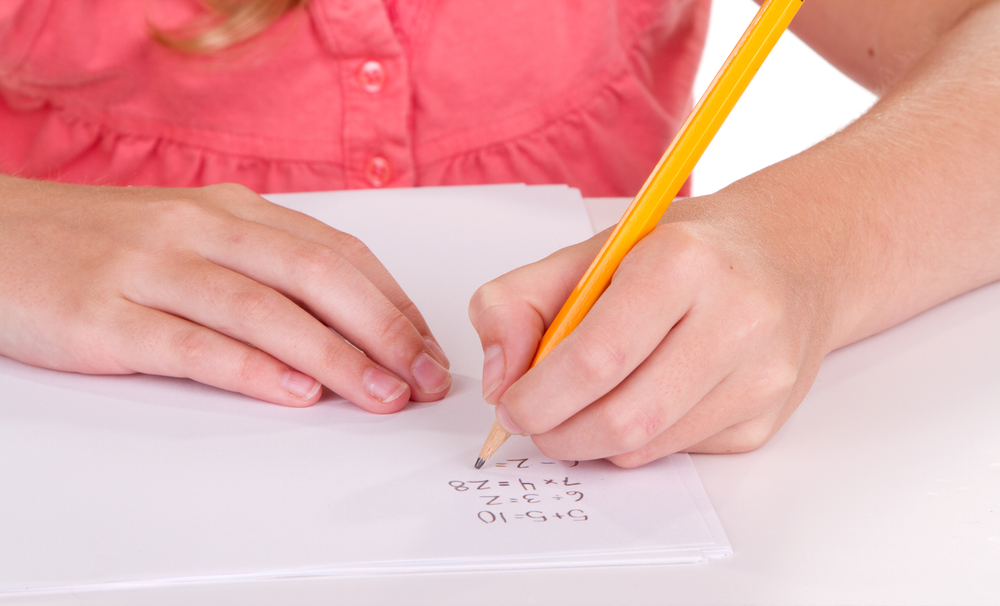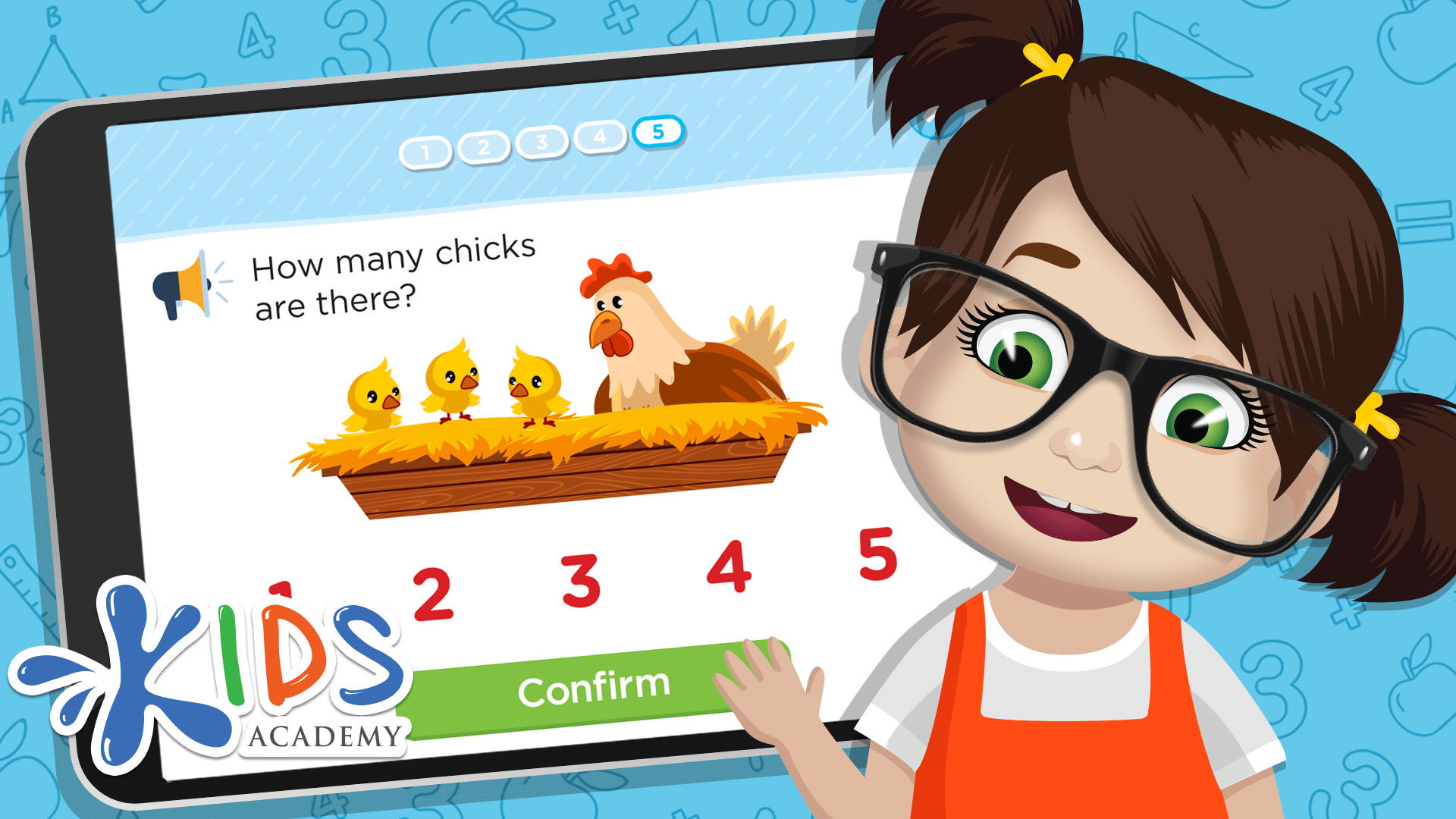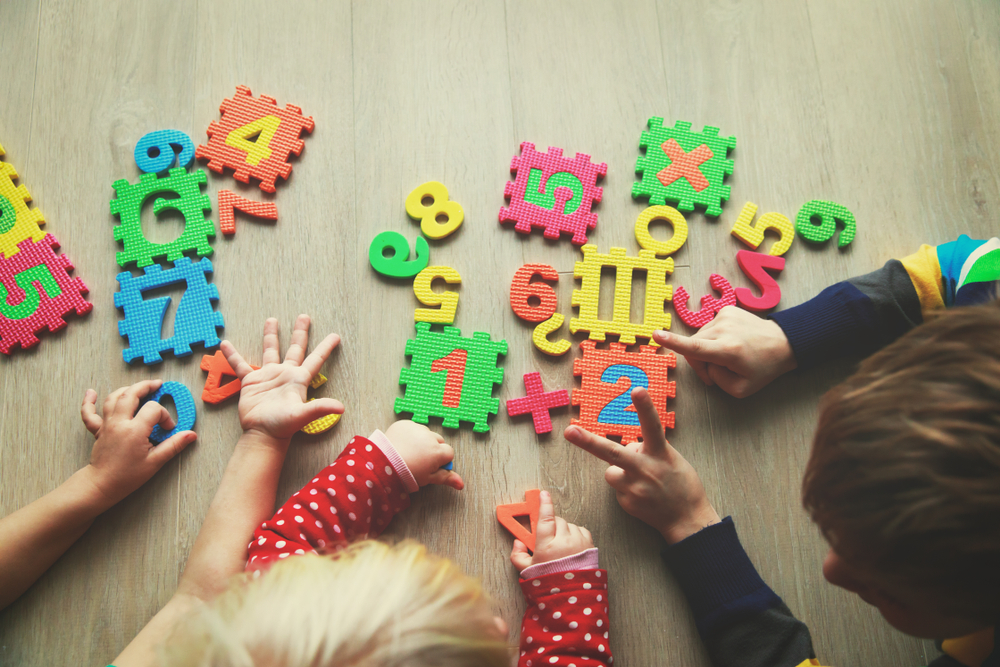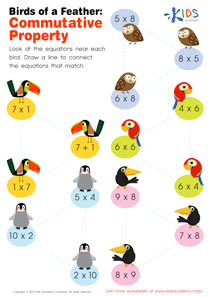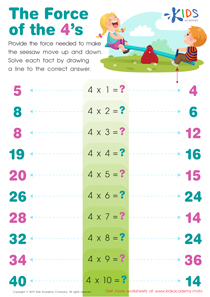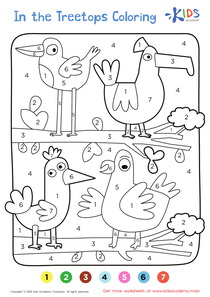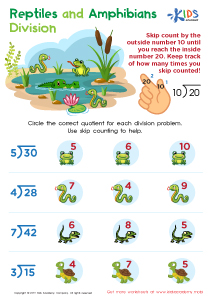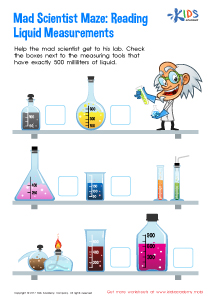Animal recognition Grade 3 Addition & Subtraction Worksheets
4 filtered results
-
From - To
Introducing our "Animal Recognition Grade 3 Addition & Subtraction Worksheets," the perfect blend of education and fun! These worksheets help third graders enhance their math skills through exciting animal-themed problems. Students will practice addition and subtraction while simultaneously engaging with vivid animal images, transforming routine exercises into captivating learning experiences. Each sheet is thoughtfully crafted to reinforce essential math concepts and improve problem-solving abilities. Ideal for both classroom use and at-home practice, our worksheets make learning enjoyable and effective. Boost your child’s math prowess and make every lesson an adventure with Kids Academy's carefully designed resources!
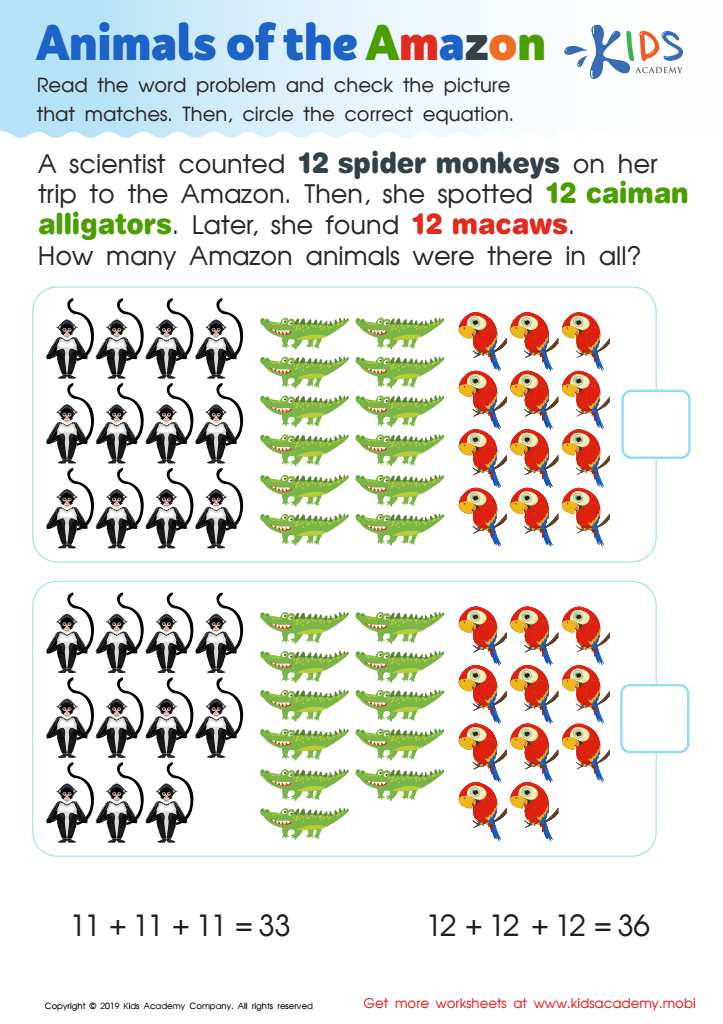

Animals of Amazon Worksheet
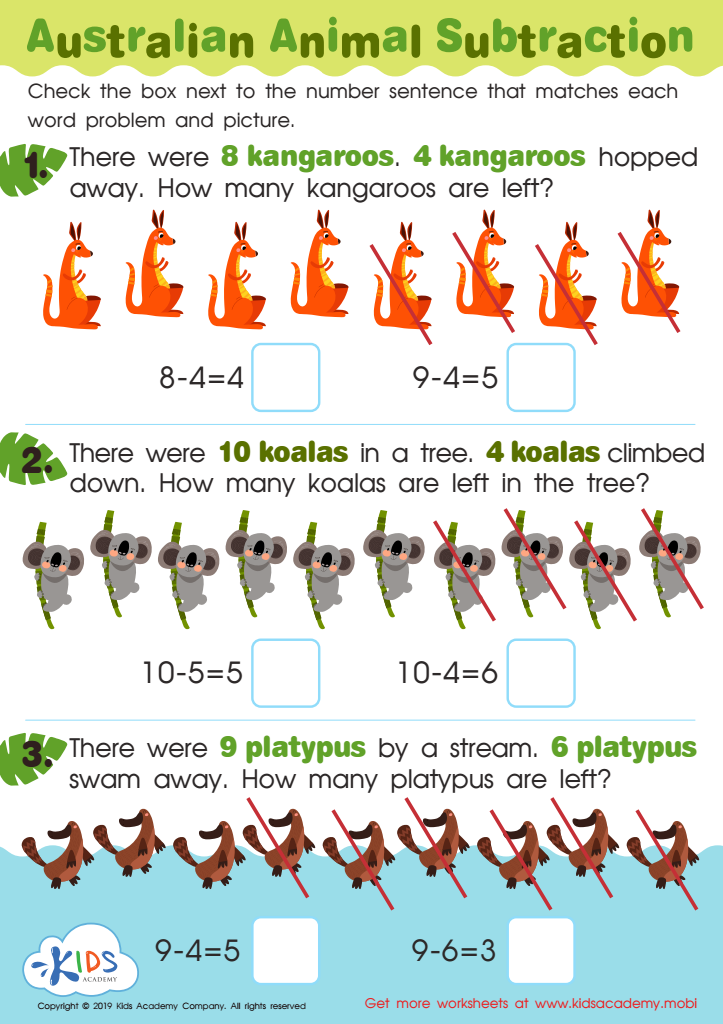

Australian Animal Subtraction Worksheet
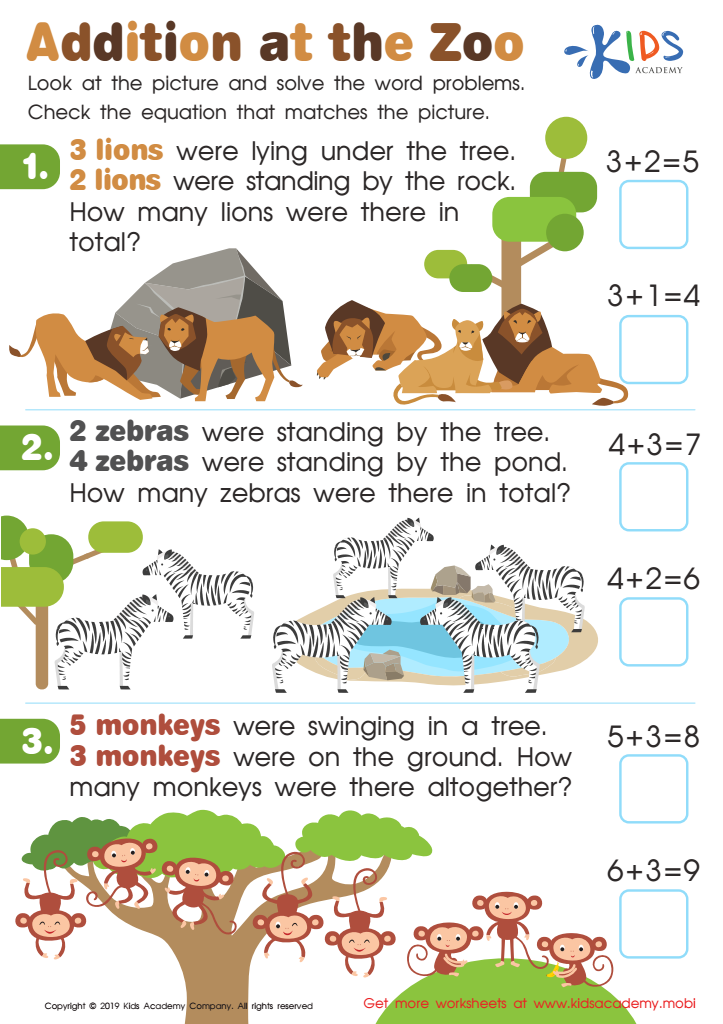

Addition at the Zoo Worksheet
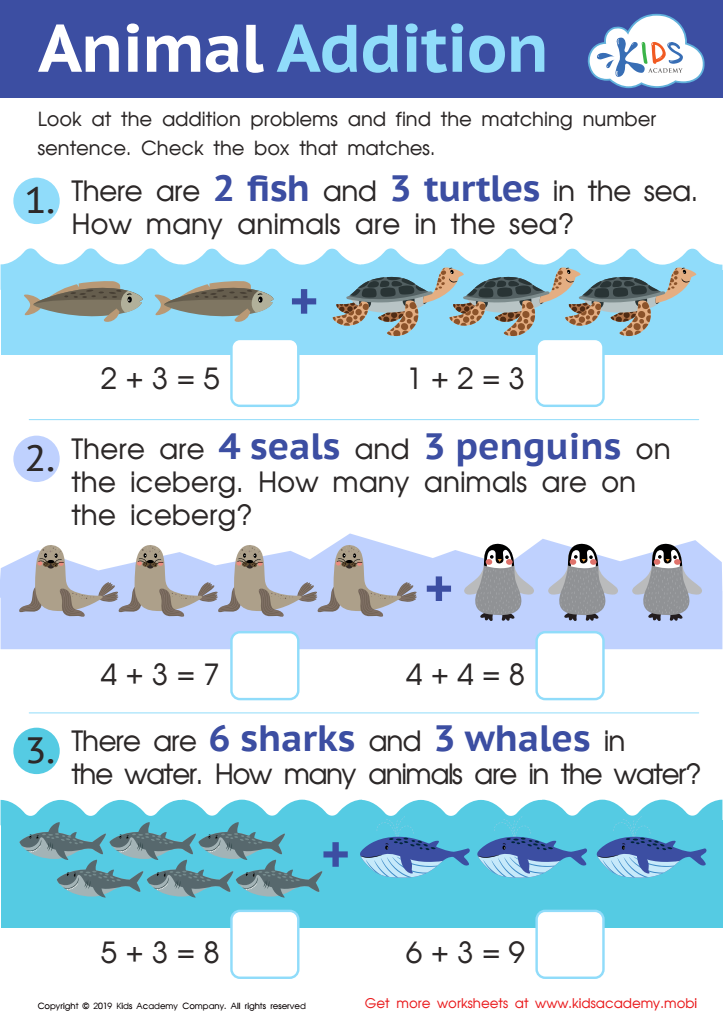

Animal Addition Worksheet
Parents and teachers should care about integrating animal recognition with Grade 3 addition and subtraction because it creates a multifaceted learning experience that enhances both cognitive and emotional development in children. By combining these elements, educators can foster a love for wildlife while simultaneously reinforcing essential math skills.
Engaging children with animals they are naturally curious about makes the learning process more enjoyable and memorable. When math problems incorporate familiar animals, it provides a concrete visual context that helps students understand abstract numerical concepts. For example, if a math problem mentions ‘3 rabbits’ and ‘4 squirrels,’ children can easily visualize these animals, which aids their comprehension and retention of addition and subtraction.
Furthermore, this integrated approach supports differentiated learning by catering to various learning styles. Visual learners benefit from animal imagery, kinesthetic learners can engage with hands-on activities, and auditory learners can follow along with animal-themed stories. This strategy helps maintain student interest and attention, potentially improving academic performance.
Encouraging animal recognition alongside math awareness also broadens children’s knowledge about biodiversity, fostering empathy and a sense of responsibility towards the environment. Therefore, this dual-focus approach prepares children with both the analytical skills necessary for math and the compassionate mindset needed for understanding and preserving wildlife.
 Assign to My Students
Assign to My Students



